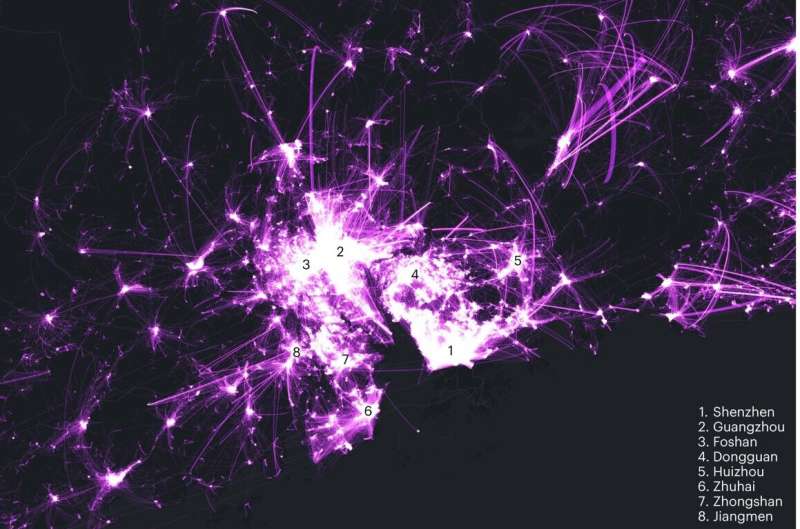This article has been reviewed according to Science X's editorial process and policies. Editors have highlighted the following attributes while ensuring the content's credibility:
fact-checked
peer-reviewed publication
trusted source
proofread
Defining a city using cell-phone data

Humans are becoming more urban, with more than half of the world's population now living in cities. This rapid growth poses unique challenges to both the study and governance of cities—a challenge made harder because we lack a single common definition of "city."
Cities are often defined by political or administrative units or by built-up areas identified via satellite imagery. The best definitions depend on observing people's mobility between home, work, and other activities—data traditionally collected via surveys, which are expensive, incomplete, and limited to a few nations. New technologies now offer a more complete picture.
In a recent Perspective in Nature Cities, SFI Professor Geoffrey West, External Professor Luís Bettencourt (University of Chicago), and co-authors propose that the geolocated data from the world's more than 7 billion cell phone users could be used to map out city limits.
Cell phone data accurately reveal people's presence, movements and social interactions over space and time; these data are becoming the most widespread proxy for drawing city limits. Pairing cell phone data with other datasets, such as remote-sensing imagery and census data, could further improve accuracy and help advance the science of cities as complex systems and their role in global sustainability.
More information: Lei Dong et al, Defining a city — delineating urban areas using cell-phone data, Nature Cities (2024). DOI: 10.1038/s44284-023-00019-z
Journal information: Nature Cities
Provided by Santa Fe Institute




















